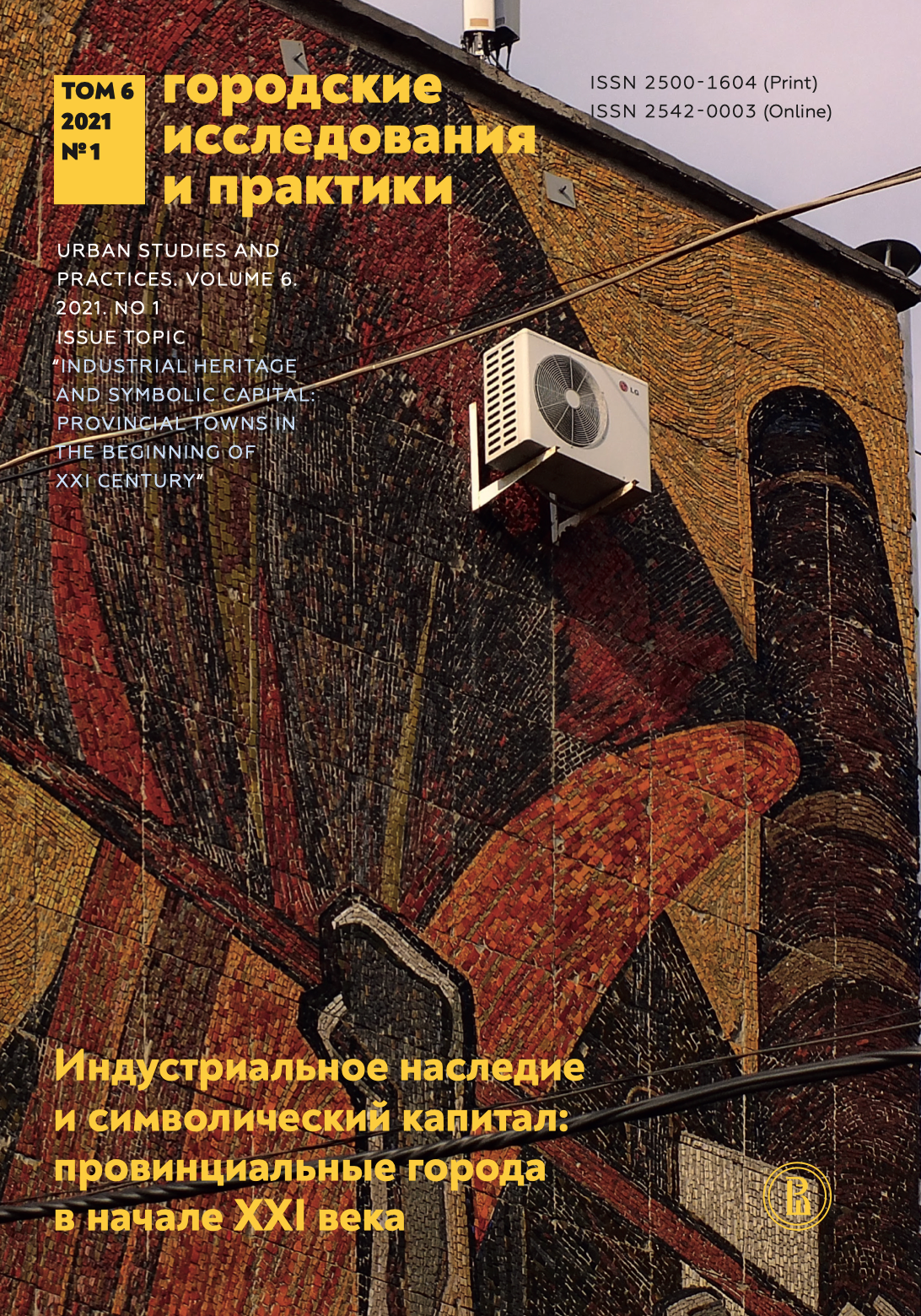Горнозаводская и равниннофабричная цивилизации России: индустриальное наследие и городская идентичность
Аннотация
Мы обсудили с экспертами, как сегодня работают с историческим индустриальным наследием в городах России и какую роль оно играет в формировании их идентичности и среды. Чтобы сфокусировать дискуссию, мы выбрали два исторических промышленных региона страны с уникальными и узнаваемыми характеристиками: «горнозаводскую цивилизацию» Урала и текстильную «равниннофабричную цивилизацию» северо-востока центральной части России. Как свидетельствуют эксперты, большое индустриальное наследие Урала постепенно осваивается городами и включается в городскую среду и идентичность. Города-заводы в поисках идентичности возвращаются к своим истокам. Но как протекает этот процесс? Укладывается ли он, например, в дилемму «снос или ревитализация»? Какие цели при этом ставятся? Происходит ли это в малых городах региона? Эксперты расходятся во мнениях. Опыт показывает, что важную роль играют сами промышленные гиганты, наравне с городами актуализирующие свое наследие. Впрочем, как выясняется, не везде на Урале господствует индустриальная идентичность, даже если ее поддерживает процветающая отрасль. Например, в Пермском крае ее дополняют поиски новых смыслов на территории актуальной культуры. В свою очередь, равниннофабричную цивилизацию постигла иная участь. Здесь города-заводы, урбанистически и эстетически сформированные своими производствами, стали просто городами. Кризис текстильной отрасли, исчезновение или упадок предприятий оставили городам большое, но выключенное из их жизни индустриальное наследие. Поэтому попытки выстроить локальную идентичность непосредственно на его основе в основном проваливаются, что заставляет искать обходные пути освоения этого наследия — например, через акцент на уникальной конструктивистской архитектуре.
Скачивания
Литература
Абашев В.В., Абашева М.П. (2012) Литература и география: Урал в геопоэтике России // Вестник Пермского университета. Серия: История. № 2. С. 143–151.
Алферов Н.С. (1960) Зодчие старого Урала. Первая половина XIX века. Свердловск: Свердловское книжное издательство.
Богословский П.О. (1927) О постановке культурно-исторических изучений Урала // Уральское краеведение. № 1.
Лотарева Р.М. (1998) Города-заводы России. XVIII—первая половина XIX века. Екатеринбург: Изд-во Урал. ун-та; Урал, архит. -худож. институт.
Лахтионова Е.С. (2016) История изучения индустриального наследия по материалам журнала «Архитектон: известня вузов» // История науки и техники в современной системе знаний: Шестая светодина конференция кафедры истории науки и техники, 9 февраля 2016. Екатеринбург: УНИ УПИ. С. 123–129.
Мальцев А.А., Мерсиер-Суисса К., Мордвинова А.Э. (2017) К трактовке понятия «реиндустриализация» в условиях глобализации // Экономика региона. Т. 13. № 4. С. 1044–1054.
Меньшикова И.В. (2007) «Текстильный край»? Проблемы и перспективы развития региональной идентичности в г. Иванове // Границы. Альманах Центра этнических и национальных исследований ИвГУ. Вып.1. Этническая ситуация в Ивановской области. Иваново. С. 115–126.
Солонина Н.С., Шипицына О.А. (2015) Историко-архитектурный потенциал индустриального наследия Среднего Урала // Архитектон: известня вузов. № 2 (50). Режим доступа: http://archive.ru/2015_2/8 (дата обращения: 21.03.2021).
Солонина Н.С., Шипицына О.А. (2018) Концепция архитектурно-презентационной актуализации Ревианско-Перекуральского исторически сложившегося промышленного культурного центра // Архитектон: известня вузов. № 2 (62). Режим доступа: http://archive.ru/2018_2/14 (дата обращения: 21.03.2021).
Трубина Е. (2013) Центр и периферия: между ростом и развитием // Логос. № 4. С. 237–266.
Шипицына О.А. (2012) Уникальный индустриально-ландшафтный ансамбль в Кущее: история создания и концепция сохранения // Архитектон: известня вузов. № 1. С. 56–73.
Шипицына О.А. (2020) История промышленного зодчества Урала: эволюция научных исследований // История и современное мировоззрение. Т. 2. № 1. С. 67–75.
Шипицына О.А., Солонина Н.С. (2018) Исторически сложившиеся индустриальные культурные центры Урала в контексте современной реиндустриализации // Урал индустриальный. Банунинские чтения. Индустриальная модернизация России в XVIII–XXI вв.: материалы XIII Всероссийской научной конференции, Екатеринбург, 18–19 октября 2018 г.: в 2-х т. Екатеринбург: УрО РАН. Т. 2. С. 399–413.
Ponomaryova A., Ryan B. (2020) Will Kyiv’s Soviet Industrial Districts Survive? A Study of Transformation, Preservation, and Demolition of Industrial Heritage in Ukraine’s Capital // Journal of Planning History. P. 1–49.
Dorel-Ferré G. (2018) Le Patrimoine des Villages Ouvriers et des Villes-Usines, vers une Analyse Planétaire // Industrial Heritage in the 21st Century. New Challenges. Proceedings of the XVIth International TICCH Congress 2015. CI-LAC, France. P. 108–113.

